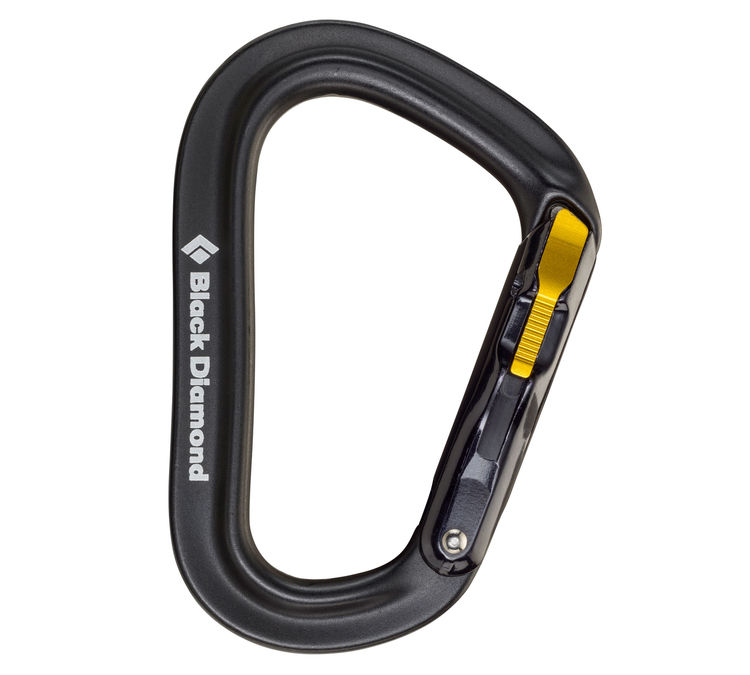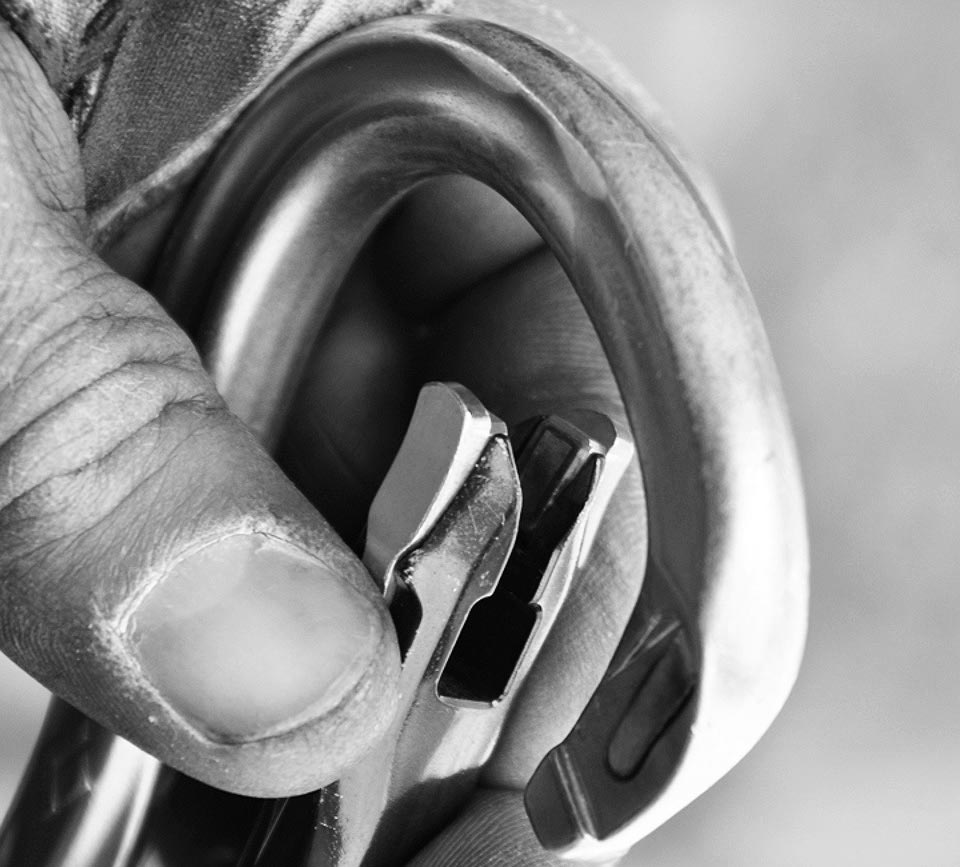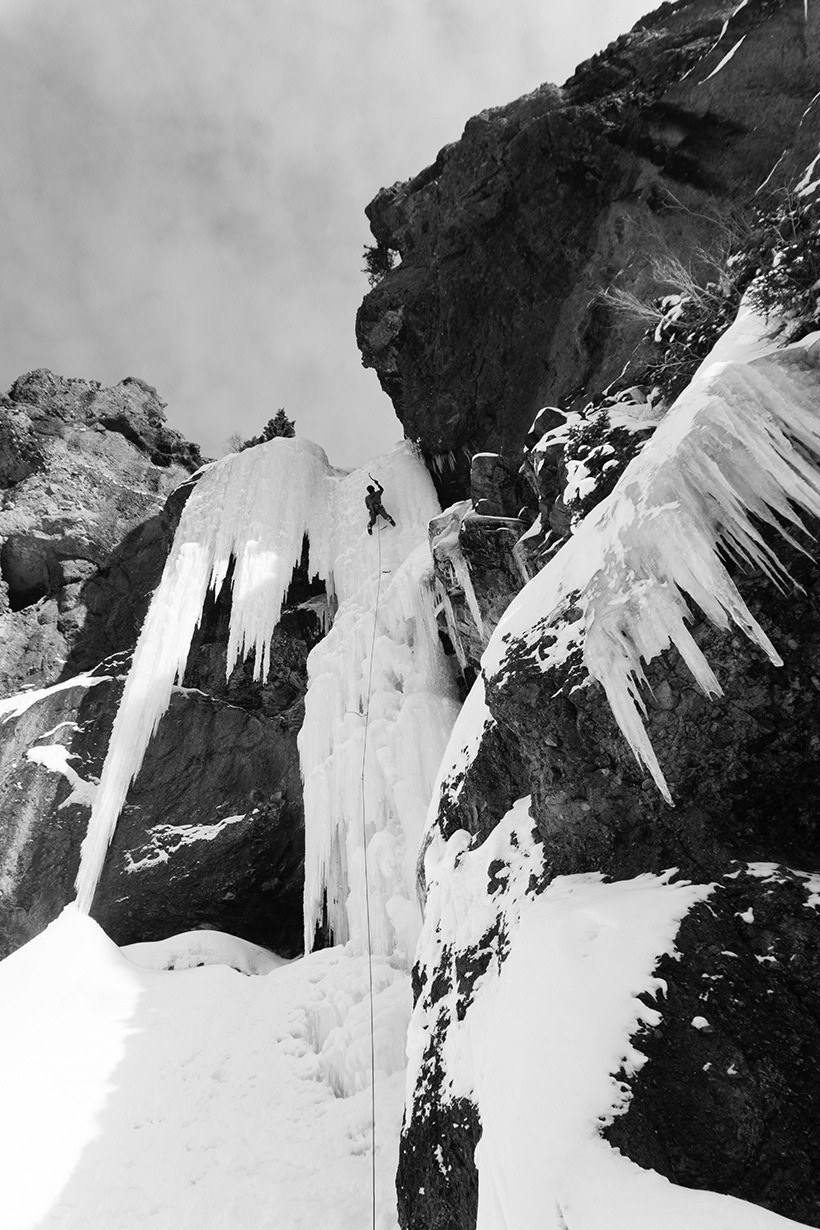
Black Diamond Vaporlock Magnetron Carabiner
Stated Weight : 56 g (2 oz)
Locking System: Magnetic
Closed Gate Major Axis Strength : 21 kN (4,721 lbf)
Open Gate Major Axis Strength : 7 kN (1,574 lbf)
Minor Axis Strength : 8 kN (1,798 lbf)
Gate Opening : 20 mm (0.79 in)
MSRP: $27.95
Test Locations: Gallatin Canyon, Swan Range, & Hyalite Canyon, MT; Wind River Range, WY
Days Tested: 30
Intro
When Black Diamond first introduced their Magnetron series of carabiners, the use of inset magnets in the gate of locking carabiners represented a significant change in both locking mechanism and handling characteristics compared to normal locking biners, whether that be a screw-gate or auto-locker.
Since their release a few years ago, Black Diamond has expanded the Magnetron line, and we’ve spent the past season using the VaporLock Magnetron on everything from single-pitch climbs in Indian Creek to multi-pitch ice in Montana to see just how effective this innovation really is.
*Note: Due to the identical magnetic locking mechanism in each model, I will use the term “Magnetron” to refer to features found on all three Black Diamond Magnetron carabiners, and will use “VaporLock” to refer to the specific carabiner I tested.
Design and Shape
Black Diamond makes three different carabiners with their Magnetron technology: the RockLock, GridLock, and VaporLock. The RockLock is a full-size pear-shaped carabiner, the GridLock is unchanged in shape from the screw-gate version we reviewed previously, and the VaporLock is a small pear-shaped carabiner, similar in size and shape to the Petzl Attache.
[For those unfamiliar with the Black Diamond carabiner line, the GridLock carabiner looks like a pinched figure-8 with a small ‘horn’ on the inside pivot of the gate that isolates the small side of the “8” to reduce the possibility of cross-loading when belaying with an assisted-braking belay device.]
Although all the Magnetron carabiners are hot forged to reduce weight, the VaporLock is the sveltest of the three options with a stated weight of 56 grams, and has very little material on the outside of the spine, resulting in a cross-section that looks like a “T” (as compared to an “I” or “H” style profile).
Magnetron technology
Ultimately what sets the Magnetron carabiners apart is not their shape or weight, but the unique locking mechanism. And while using magnets certainly sounds sexy and advanced, there’s no point in shelling out the extra cash for them if the technology isn’t as good or better than a standard locker.
To operate a Magnetron carabiner, you pinch the two sides of the gate on the small swing arms and the gate opens easily. This is a different motion than a normal locker and definitely took some getting used to as my first instinct was to try and twist the gate as I normally would with a screw-gate or auto-locking biner. However, I quickly grew to like the ease and simplicity of the Magnetron gate opening, especially since opening the gate is an identical movement regardless of which hand you use, or the orientation of the carabiner. I did have some trouble opening the gate when wearing a pair of heavy gloves, but that is true of every carabiner I’ve ever used.

Unlike most other locking carabiners, the locking mechanism on Magnetron carabiners do not have an internal locking mechanism. A screw-gate or traditional auto-locking biner uses a sleeve around the gate that rotates over the nose of the carabiner to hold the gate shut. Magnetron carabiners are unique in that the locking mechanism is external and expulsive rather than contained within a sleeve. On normal lockers, I find the locking mechanism is the first thing to get gummed up and clogged, usually by dirt, mud, or ice. I found the Magnetron lock clogged less easily than a normal locker. It is worth noting that the magnets do tend to collect dirt and grime, but a quick brush with a finger clears the mechanism out (and since they’re not inside a sleeve, they’re easier to clean).
Additionally, because the Magnetron mechanism expands when you press the levers to open the carabiner, the gate will self-clean itself of ice or mud build-up each time you open it. This is of particular importance to winter climbers as normal screw-gates and auto-lockers will sometimes freeze up and turn into inoperable chunks of metal as water drips into the sleeve and freezes solid. I used the Magnetron this winter on a series of ice and mixed routes in Montana and found the locking mechanism more reliable than a screw-gate carabiner. I did not have to warm up the VaporLock nearly as often as on a screw-gate carabiner due to ice buildup inside the locking mechanism. I did, however, notice several times that, when left unattended for a long period, ice built up around the levers of the Magnetron and I needed to remove my gloves in order to pinch hard enough to expel the ice.

Durability
I found the VaporLock on par with other small lightweight lockers in terms of durability. The “T” profile wears down relatively quickly compared to a full round-stock carabiner, so I save the VaporLock for use in multi-pitch anchors, my personal tether, or other non-abrasive uses in order to prolong its useful life. Put simply, a lighter / thinner carabiner is not as durable as a heavier / thicker carabiner. I use a round-stock locker for a top-rope anchor or for rappelling and save the lightweight hot-forged carabiners for use on multi-pitch routes or the alpine where weight is more of a concern.
Bottom Line
Although I still often prefer a simple screw-gate carabiner for most uses, Black Diamond’s Magnetron technology represents a potential paradigm shift in how engineers think about designing locking carabiners. Although it is significantly more expensive than other locking carabiners on the market (to the tune of 25-50% more), I think the cost is worth it if you are looking for a lightweight, reliable auto-locker that performs well in alpine conditions. For uses like my personal tether, the VaporLock is now my auto-locker of choice.
